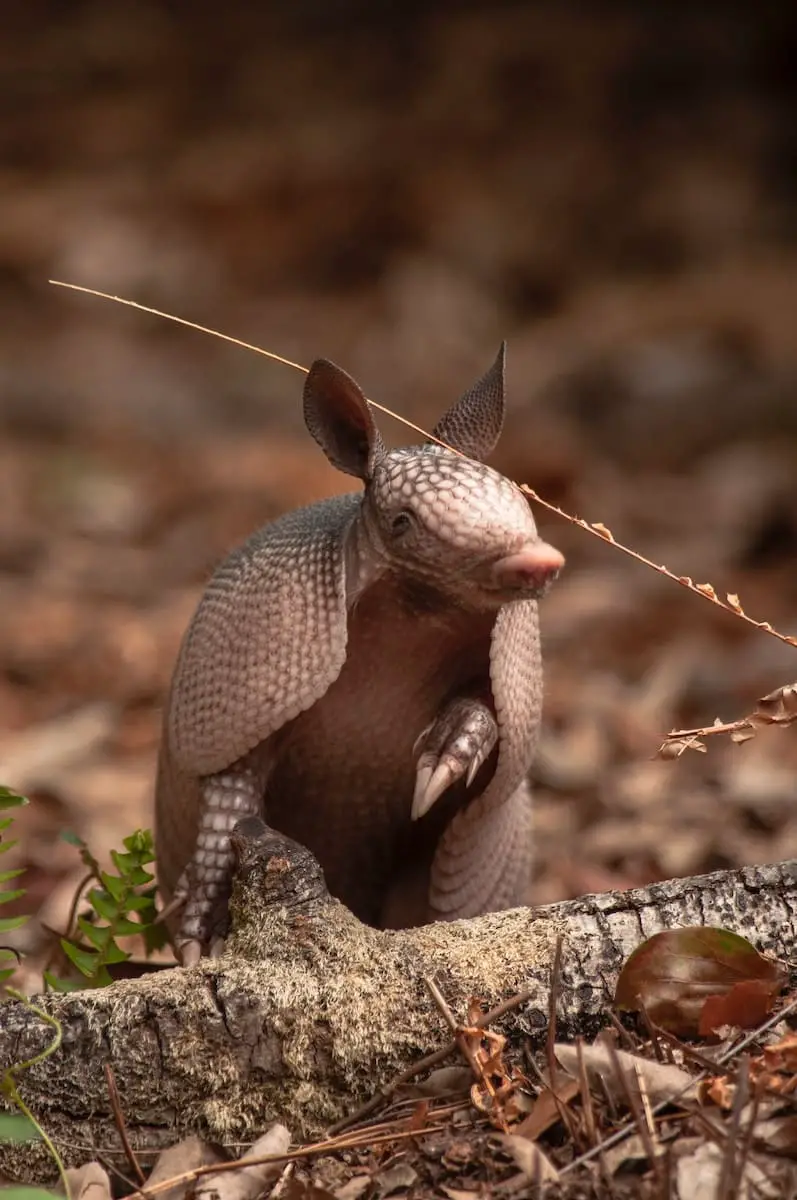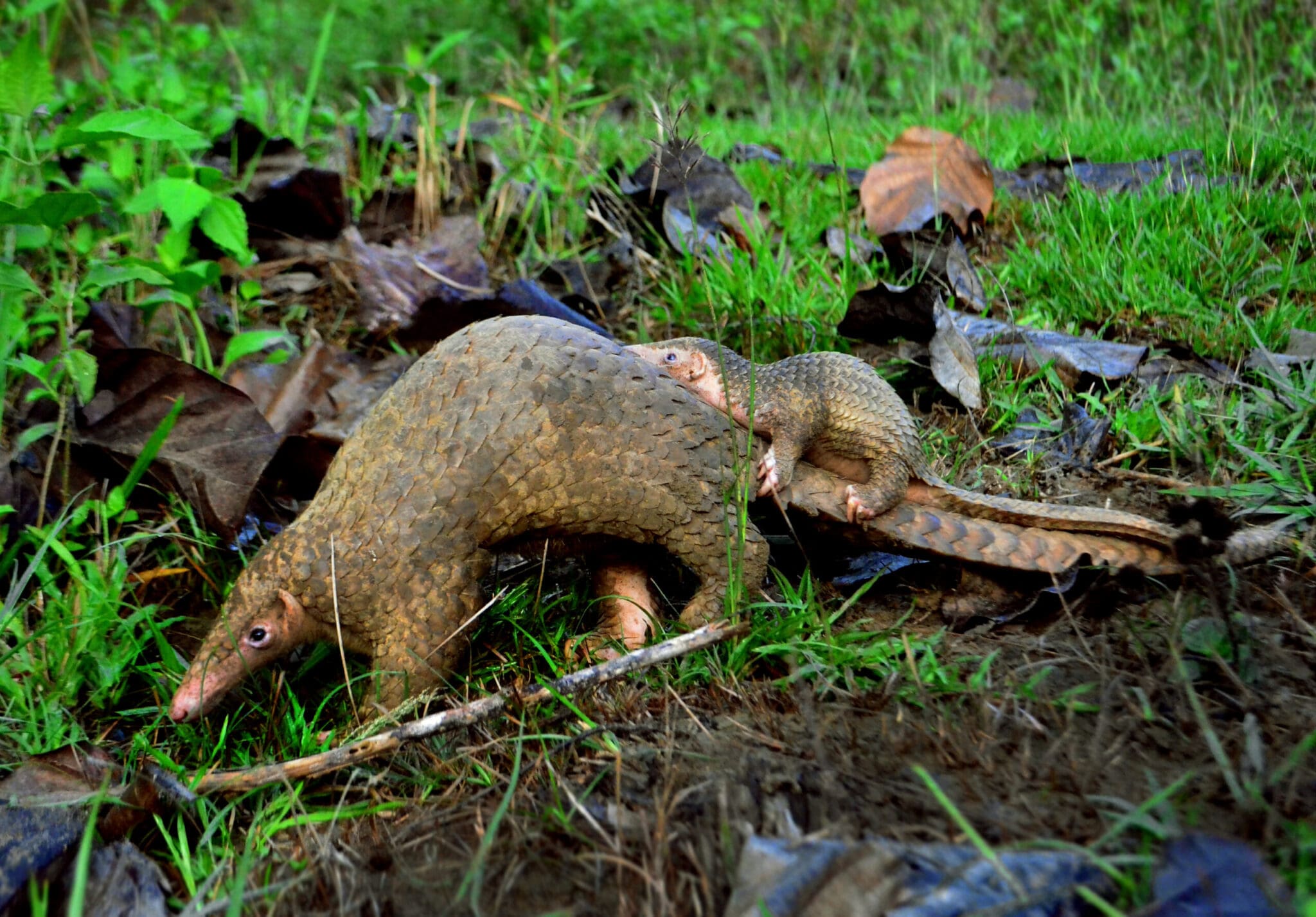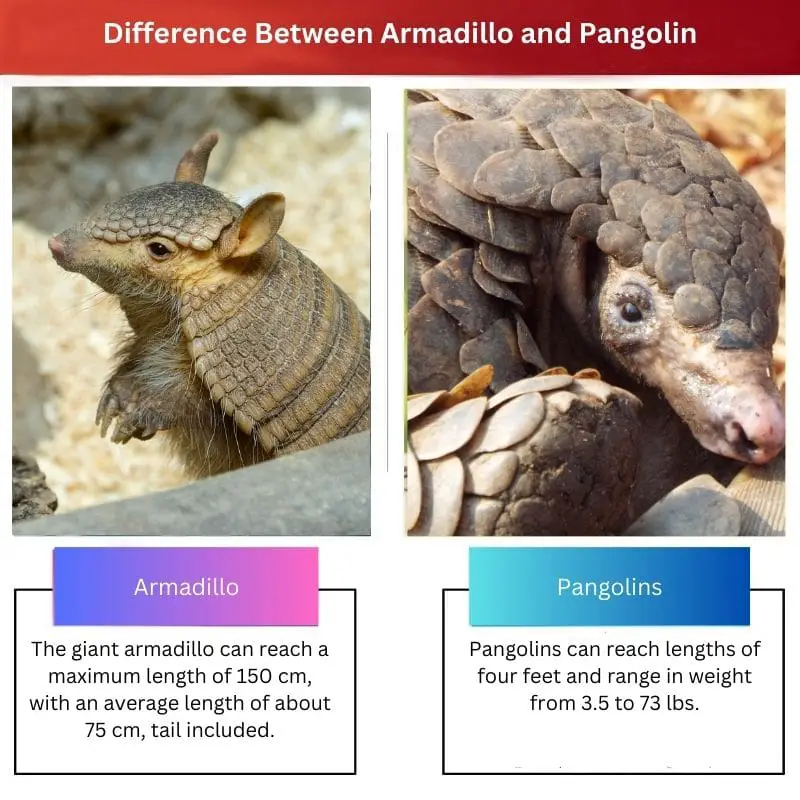Key Takeaways
- Armadillos are found in the Americas, while pangolins are found in Africa and Asia.
- Armadillos have a tough outer shell made of bony plates, while pangolins have tough scales made of keratin.
- Armadillos are omnivorous and eat insects, plants, and small animals, while pangolins are insectivorous and eat ants and termites.

What is an Armadillo?
The Spanish word “armadillo,” which refers to the presence of bone plates covering their bodies, translates to “little armoured one.” Contrary to popular perception, not every armadillo can enclose itself in its shell. The three-banded armadillo is the only animal that can do this, which confuses would-be predators by folding its head, back paws, and body into a hard ball.
Armadillos are the generalist feeders and feed on over 500 invertebrates like beetles, cockroaches, wasps, yellow jackets, fire ants, scorpions, spiders, snails, and white grubs. They prefer living in woodland or grassland settings in warm, moist climes. These incredible animals can easily cross small waterways. The nine-banded armadillo can swim or “walk” along the bottom of rivers and hold its breath for up to six minutes.
The pink fairy armadillo, roughly 5 to 6 inches long, is the tiniest known armadillo, and the giant armadillo, which is 60 inches long and can weigh up to 120 pounds, is the largest. Giant armadillos have six inches long claws and can have up to 100 teeth. They are as big as mature dogs.

What is a Pangolin?
Pangolins, known as scaly anteaters due to their favoured diet, are the most trafficked mammals in the world. Asia and Africa are regions where demand for their meat and scales is growing. Also, there is a market for pangolin products in the US, particularly for the leather used for boots, bags, and belts.
Pangolins come in eight species and live on two continents. From Vulnerable to Critically Endangered, they are all. Pangolins have thick, overlapping scales covering them. These creatures can quickly fold themselves into a tight ball and devour ants and termites with an exceptionally long, sticky tongue when frightened.
Pangolins come in eight different species spread out over Asia and Africa. One of the most endangered groups of animals on the planet, these fantastic creatures result from habitat degradation and poaching for the illegal wildlife trade.
The IUCN Red List of Threatened Species lists two of the eight pangolin species as Critically Endangered, and all eight are protected under local, national, and international law.

Difference Between Armadillo and Pangolin.
- Armadillos weigh between nine and sixteen pounds, and their average length, including the tail, is about 75 cm. In contrast, pangolins can reach lengths of four feet and weigh between 3.5 and 73 pounds.
- Most armadillos’ habitats are warm environments, such as grasslands, semi-deserts, and other wooded regions. Meanwhile, Sandier environments like savannahs, dry woodlands, and tropical forests are home to pangolins. They reside around water bodies.
- In June through September, armadillos mate, and pangolins only breed once a year, in the summer or fall.
- A pangolin’s speed is merely 3 miles per hour, whereas an armadillo has the highest speed of 30 miles per hour.
- There is a proximity between the composition and structure of lizard and pangolin scales. For the armadillo, plates of dermal bone coated in keratinous scales known as scutes serve as its armour.
Comparison Between Armadillo and Pangolins
| Parameter of comparison | Armadillo | Pangolins |
|---|---|---|
| Physical Measurements | The giant armadillo can reach a maximum length of 150 cm, with an average length of about 75 cm, tail included. | Pangolins can reach lengths of four feet and range in weight from 3.5 to 73 lbs. |
| Mating and Reproduction | Armadillos mate in late summer between June and September. | Pangolin mating happens once each year, during the summer or autumn. |
| Shield | Sharp, substantial, overlapping scales. | Shoulders, hips, bony shells, and the back’s interconnected bands of various species have various bands. |
| Teeth | Armadillos have no teeth. | Pangolin teeth are not premolars or molars No canines or incisors |
| Habitat | South Asia and South Africa. | South America and North America. |





